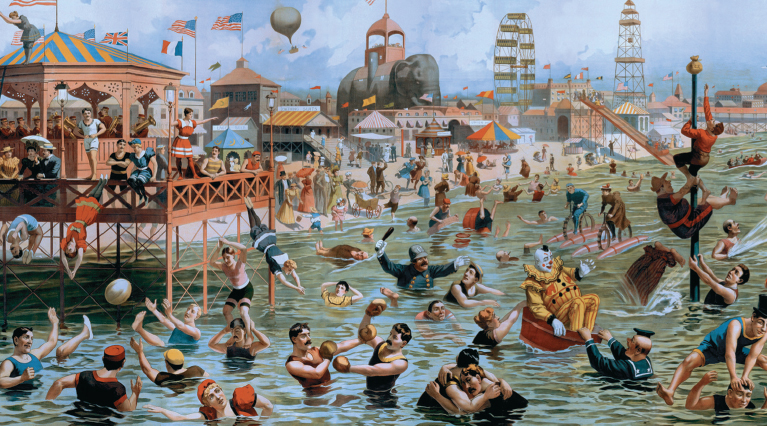How did urban industrialism shape home life and the world of leisure?
Printed Page 566

Figure false: Beach Scene at Coney Island
Figure false: Coney Island became a symbol of commercialized leisure and mechanical excitement at the turn of the twentieth century. This fanciful rendering of Coney Island captures men and women frolicking in the waves. Notice the modest woolen bathing outfits. Men box and play ball, a woman flies on a parachute, a uniformed policeman wades into the fray, while the Ferris wheel dominates onshore. Sunday crowds reportedly reached 100,000. Library of Congress.
KEY FACTORS
- –The cultural ideal for white, middle-class women centered on what is called the “cult of domesticity.”
- –In U.S. cities by 1870, 15 to 30 percent of households had live-in domestic servants, the vast majority of them women.
- – Baseball became a national pastime in the 1870s, uniting urban residents across class lines.
- – In the 1890s, Coney Island in New York became the site of the largest and most elaborate amusement parks in the country.
THE GROWTH OF URBAN INDUSTRIALISM not only dramatically altered the workplace but also transformed home and family life, and it gave rise to new forms of commercialized leisure. Industrialization redefined the very concepts of work and home. Increasingly, men went out to work for wages, while most white married women stayed home, either working in the home without pay — cleaning, cooking, and rearing children — or supervising paid domestic servants who did the housework.